Green Man was such a great way to share our research! It is a unique setting for public engagement, and we had loads of fun showing the public how cool science is. We loved building robots, playing games with the audience, and designing and performing our own play. We can’t wait for next year! After our performance, a little girl came up to us and said she wanted to now be a scientist when she is older.
Phoebe Reynolds
20 September 2022
Academics take science stories to Green Man festival
This summer, King’s academics and scientists presented a variety of workshops, activities and performances at Green Man Festival, playing a vital role in how the public can engage with academia and inspiring the next generation of researchers and scientists.
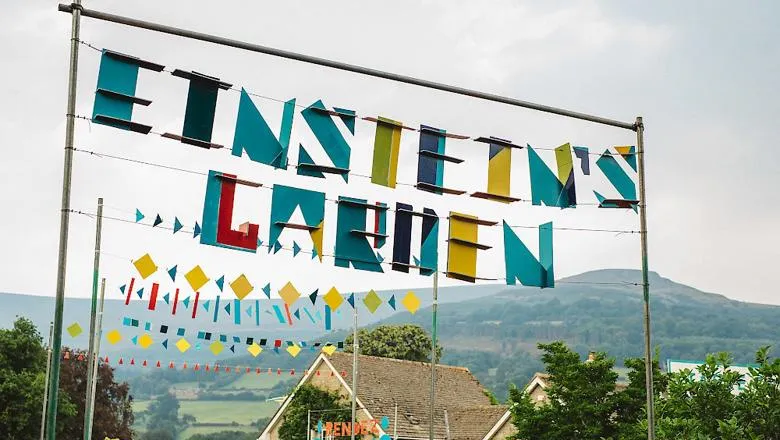
For the 20th anniversary of Green Man festival, academics from the Institute of Psychiatry, Psychology & Neuroscience, the Faculty of Dentistry, Oral and Craniofacial Sciences, the Faculty of Natural, Mathematical and Engineering Sciences and the Faculty of Social Science and Public Policy took their research to the fields as part of ‘Einstein’s Garden’, the science engagement area of the festival.
Nature to Neuroscience
This year, neuroscientists from the Centre for Developmental Neurobiology (CDN) presented a workshop called ‘Nature to Neuroscience’ focusing on how the natural world can be used in neuroscience research.
The interactive activities for all ages included the opportunity to ‘build your own brain’ model, play with responding robots to explore how light stimulates specific neurons, and find out how fluorescence from jellyfish is used in research to help things glow in the dark.
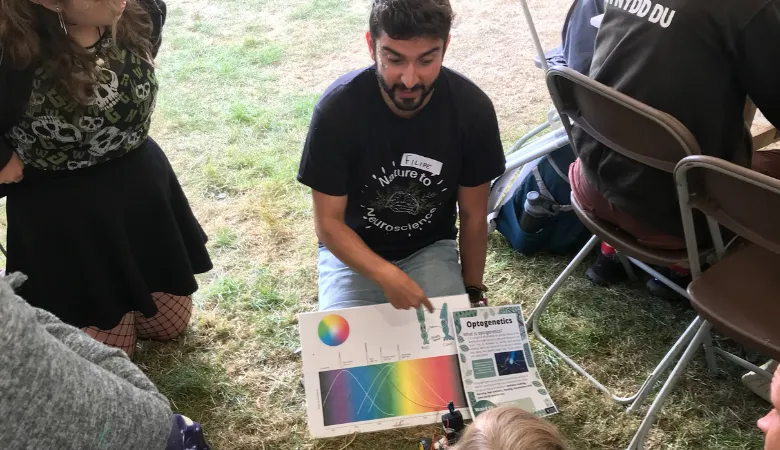
The CDN team also presented the play 'The Brave Little Neuron', looking at the life of a neuron as it grows and how it interacts in the brain. The performance was part of the department’s overarching research focus of developmental neurobiology. Designed and scripted by the research team, characters in the play included 'The Brave Neuron' and 'The Big Bad Microglia'.
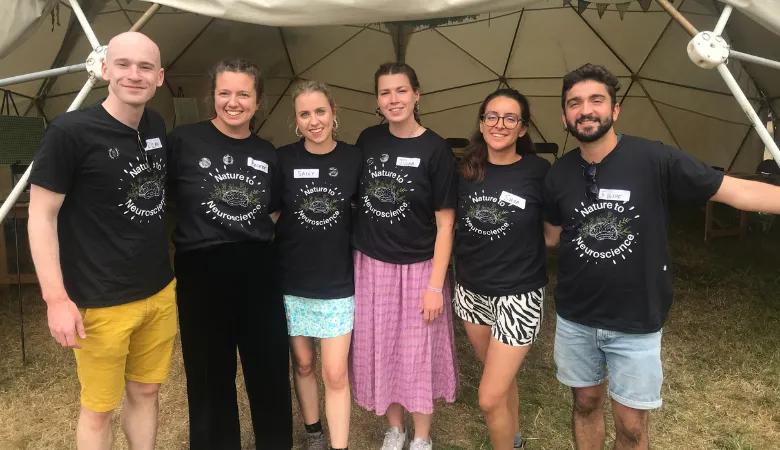
What’s the loudest noise you can think of?
Researchers including Natalie Milmoe and Olivia Dinwoodie from the Centre for Craniofacial & Regenerative Biology led the creation of a ‘giant eardrum’. They encouraged young children to write or draw their response to the question 'what’s the loudest noise you can think of?'.
The resulting collaborative science art piece acted as a springboard for getting young people to think about the anatomy of the ear, how it works, and how sound is heard.
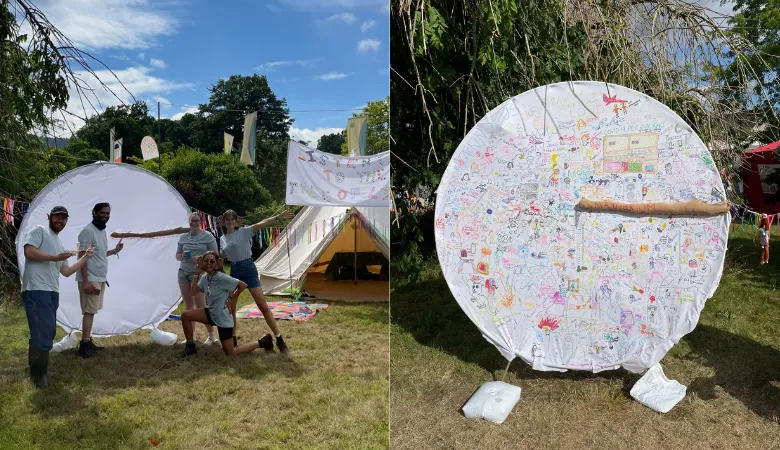
For older audiences, the team used 3D-printed ear ossicles, constructed via microCT scans, to describe how the middle ear bones work that allow people to hear and how subtle morphological changes allow for the perception of different ranges of sounds, as well as some comparative anatomy between species.

Our stall at Greenman focused on the middle ear and eardrum. Overall, it was a brilliant experience, we all learnt a lot and the question of ‘what is the loudest thing you can think of?’ often resulted in some funny answers – a lot involving little sisters!
Olivia Dinwoodie
Explaining the universe
Benjamin Pethybridge, from the Theoretical Physics Group, presented a fun and inclusive exploration of aspects of modern Physics theory and research.
His activities included demonstrating Einstein's ideas about gravity, helping attendees find out how Black Holes warp spacetime, and understand why dark energy helps us explain the universe.
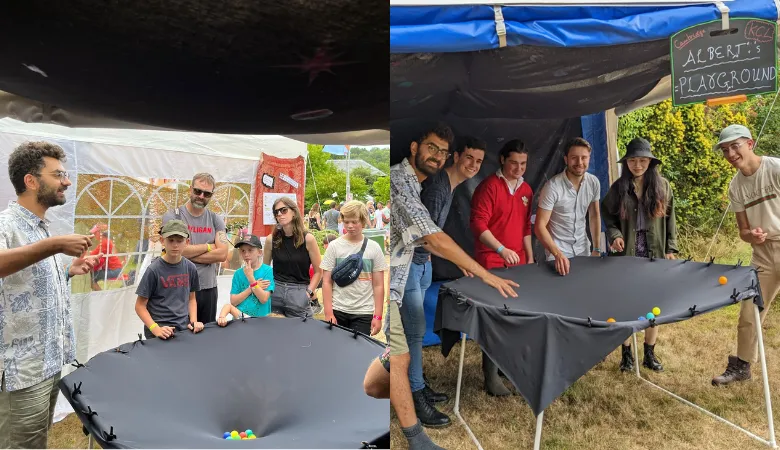
Our stall used the recent picture of the M87 black hole taken by the EHT collaboration to start conversations about gravitation and quantum mechanics. We set up demonstrations to help the volunteers explain aspects of their research, and brought the participants back to the black board to describe how the picture was taken and it's significance to the physics community. We had a huge reception and all the volunteers had fun reaching out and discussing physics throughout the festival. The interest of even the youngest participants in the universe around them was incredibly inspiring.
Ben Pethybridge
Weather the Weather
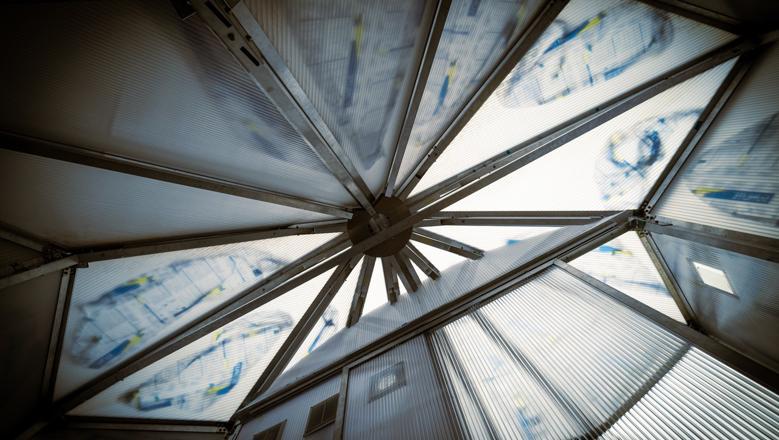
The festival also saw the premiere of ‘Weather the Weather’, the immersive art installation from Dr George Adamson, Senior Lecturer in Geography at King’s and artist Inés Cámara Leret that aims to make changes to climate 'real'. The project also includes technical teams and volunteers from the Department of Geography and the department's JBT Laboratory, who gave their time to ensure the installation was a success at Green Man.
The installation was originally developed in 2019/20 as part of King’s Artists, King’s flagship artist-in-residence scheme.
These activities were made possible with funding from the King’s Public Engagement Small Grants Scheme; Wellcome Trust Institutional Strategic Support Fund (ISSF) 204823/Z/16/Z; King’s Artist programme.
